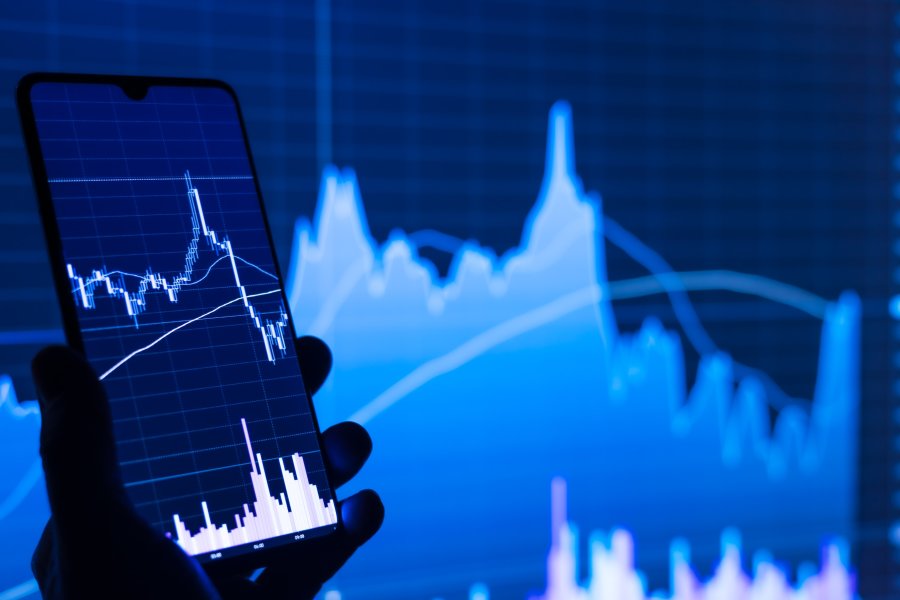Monthly Market News
09.04.20215 min
Share the article
Monthly Market News March 2021 - Market trends
A year ago - following an unprecedented rapid crash - equity markets worldwide reached a low point after the corona virus outbreak. Nobody could have suspected that, one year later, equity markets would have regained their pre-corona levels (Europe) or even amply exceeded them (United States).
Equity market trends: strong March results in excellent quarter
March was an outstanding month for equity markets. The S&P 500 reached a new historic record and closed the month just slightly below the 4,000-point level. The Nasdaq index closed the month only just about positive. The expected strong growth anticipated for the US due to faster vaccination and a strong stimulus plan, triggered the positive investor sentiment. The performance of the American stock market was also driven by the rise of the dollar. The new, stricter containment measures in many European countries and the slow vaccinations appear not to have any short-term impact on the market performance in the region. The emerging - and in particular Asian - markets were the exception and lagged behind. They also suffer from the rise in American interest rates. The sector rotation of growth equities to value equities was less prominent in the past month than during the previous weeks, with considerable daily fluctuations both in positive and negative direction for, amongst others, the technology sector. This caused the American stock market to be more volatile than the other regions.
Bond market trends: divergence European and American yields resumes
The rates stabilised around -0.30% for German 10-year bonds, following the rising trend in the first two months of the year, incited by an accelerated purchase of bonds by the ECB and stricter lock-down measures in various European member states. The spreads of the southern countries of the eurozone remained stable in the past month. The rising interest trend continued in the US. The 10-year yield reached 1.75%, the highest level since January 2020. Contrary to February, the rise of nominal American interest rates can be totally attributed to the rise in the inflation expectations, while the real interest remained stable.
On balance, spreads of corporate bonds remained stable in the past month, both for the investment grade and for the high-yield segment.
On balance, spreads of corporate bonds remained stable in the past month, both for the investment grade and for the high-yield segment.
Central banks: ECB responds
The European Central Bank has decided to increase the rhythm of its pandemic bond buying programme to maintain favourable funding terms for companies, but apart from that does not see any reason to take more measures to combat the crisis. ECB president Lagarde did not give a number for the increased bond purchasing rate. Both the size and the term of the PEPP programme will remain unchanged.
The Norwegian central bank maintained its main policy interest at 0% but stated that it will probably increase the interest rate in the second half of the year. Norges Bank expects the activities to reach a normal level sooner than previously forecast, which implies a somewhat earlier rise in interest rates than anticipated in December.
The Federal Reserve did not make any adjustments to its purchasing programme. The median expectation of the Fed members remains that there will be no rate rise prior to 2024, but a higher number of members (7 compared to 5 previously) is expecting a rate increase in 2023. Current market expectations assume an initial rate increase in early 2023.
The Norwegian central bank maintained its main policy interest at 0% but stated that it will probably increase the interest rate in the second half of the year. Norges Bank expects the activities to reach a normal level sooner than previously forecast, which implies a somewhat earlier rise in interest rates than anticipated in December.
The Federal Reserve did not make any adjustments to its purchasing programme. The median expectation of the Fed members remains that there will be no rate rise prior to 2024, but a higher number of members (7 compared to 5 previously) is expecting a rate increase in 2023. Current market expectations assume an initial rate increase in early 2023.
Currencies: dollar is winning ground
March was a strong month for the American dollar which strengthened to 1.17. The difference in speed of economic revival between Europe and the US (corona wave, vaccinations, support measures) has its impact on the development of the bond rates in both regions. The rate advantage in favour of the dollar supports the exchange rate. Since the low of the dollar at the beginning of this year, the appreciation is nearing already 5% against the euro.
The British pound also continued the rise that started at the beginning of this year. This is both a post-Brexit reaction, and a reaction to the progress the vaccination programme is making, allowing for a quicker reopening of the British economy. The Norwegian krone strengthened by over 4% after the central bank announcement regarding a higher interest rate.
The rising trend of the Chinese renminbi against the dollar seems to be turning since the beginning of this year. For the second month in succession, we see a drop in the renminbi against the stronger American dollar. The economic momentum and the interest development are now evolving more in favour of the American currency.
The Turkish lira fell by over 10% after President Erdogan replaced the president of the central bank. This rekindled the fear for the independence of the organisation and its monetary policy. The impact on currencies of other emerging countries remained limited.
The British pound also continued the rise that started at the beginning of this year. This is both a post-Brexit reaction, and a reaction to the progress the vaccination programme is making, allowing for a quicker reopening of the British economy. The Norwegian krone strengthened by over 4% after the central bank announcement regarding a higher interest rate.
The rising trend of the Chinese renminbi against the dollar seems to be turning since the beginning of this year. For the second month in succession, we see a drop in the renminbi against the stronger American dollar. The economic momentum and the interest development are now evolving more in favour of the American currency.
The Turkish lira fell by over 10% after President Erdogan replaced the president of the central bank. This rekindled the fear for the independence of the organisation and its monetary policy. The impact on currencies of other emerging countries remained limited.
Commodities: oil price between production limitations and demand recovery uncertainties
Brent oil prices briefly rose in March to 70 dollars per barrel but dropped back rather significantly to below 65 dollars. The price was initially driven up by the OPEC+ decision to reverse its production reductions in April less than expected by the market (150,000 barrels/day against 1.5 million barrels/day expected due to the consensus). This means that production will generally remain unchanged in April. However, this was interpreted subsequently by the markets as uncertainty about the recovery of the demand due to new lockdowns in Europe and other regions. A new OPEC+ meeting is scheduled for early April, when production limitations will be discussed for the month of May. Nevertheless, the oil price rose by a quarter across the entire first quarter.
The price of gold dropped early March to below 1,700 dollars per ounce and struggled during the rest of the month to remain above this level. The increase in rates, predominantly at a nominal level in the past month, and the stronger dollar weighted down on the price of the yellow metal.
Industrial commodities declined slightly after the strong rise in the previous month. The price of nickel dropped by approximately 15% due to the announcement of a Chinese company that it has developed a technique to use low-quality nickel for producing high-grade nickel for use in batteries. This reduced the fear of shortages resulting from an increased demand from that sector.
The price of gold dropped early March to below 1,700 dollars per ounce and struggled during the rest of the month to remain above this level. The increase in rates, predominantly at a nominal level in the past month, and the stronger dollar weighted down on the price of the yellow metal.
Industrial commodities declined slightly after the strong rise in the previous month. The price of nickel dropped by approximately 15% due to the announcement of a Chinese company that it has developed a technique to use low-quality nickel for producing high-grade nickel for use in batteries. This reduced the fear of shortages resulting from an increased demand from that sector.
Share the article
Related articles
12 rue Eugène Ruppert
L-2453 Luxembourg
+352 45 35 451
L-2453 Luxembourg
All rights reserved 2024, Degroof Petercam





